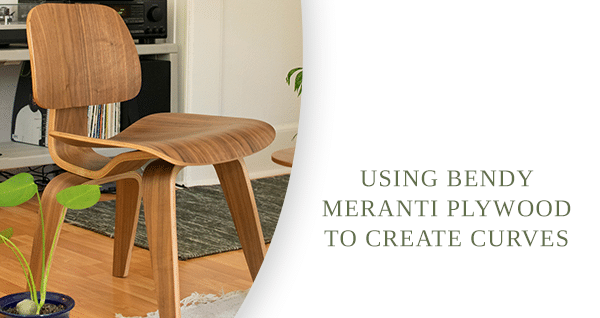
Furniture, cabinetry or boat interiors with a curve are nothing to be intimidated by. This is exactly what bendy plywood is designed for. It can take the shape of almost any curve thanks to its ability to bend in long-grain or cross-grain directions.
Bendable Meranti plywood is a type of wood made from several veneers that all run in the same direction. This plywood gives you excellent flexibility to move across or along the grain.
Applications for Bendy Plywood
Bendy plywood is commonly used for the following applications:
- Creating architectural features, such as curves
- Wall linings
- Furniture
- Reception counters
- General cabinetry
What Bendy Plywood is Made From
Bendy Meranti is an inexpensive lauan plywood — or tropical hardwood plywood product — typically made from tropical Shorea trees. The plies are held together with durable A-grade glue, which makes it light and easy to handle. At Forest Plywood, we have 5.5 mm and 9 mm sheets that come in 4’ x 8’ sheet sizes.
Made from several veneers running in the same direction, bendy plywood is a flexible ply that’s laminated either cross or long grain, which can give you the flexibility necessary to complete a curved project. The open-grained texture allows the veneer layer on the outer curve to follow the shape of the curve by expanding and the inner curve to follow the shape by compressing.
Types of Bending Plywood
You can find bending plywood in long-grain or short-grain sheets. They usually have a thin cross-grain central ply and two exterior plies that are thicker. The bending plywood is usually two layers that have been glued together. After curving the plywood, the shape is stiff and can resist movement. Decorative veneers can be added to make the exterior appear finished and attractive.
Tips for Creating Curves with Bendy Meranti Plywood
- Use clamps and a form made out of MDF wood, or use a ratchet strap.
- For a sturdier hold, you can glue pieces of bendy plywood together.
- Allow the plywood to stay clamped to the form overnight to give it time to bend to the pressure.
- Keep in mind that if the bend is too tight, it could fail due to the tension.
- Plywood strength depends on the direction it’s placed on within its supports. When the grain of the plywood face runs at a right angle to the supporting studs, it is the strong way. If the face grain runs parallel to the studs, it is used the weak way.
- The best results from bending plywood come from using a continuous round backing member.
- Radius contours can be painted or covered with laminates or paper-backed veneers.
Working with curves doesn’t need to be intimidating — thanks to bendy plywood. This flexible board will shape to almost any curved contour because of its ability to flex in both long-grain and cross-grain directions. It’s a versatile panel for complex designs and will make creating curves that much easier.



